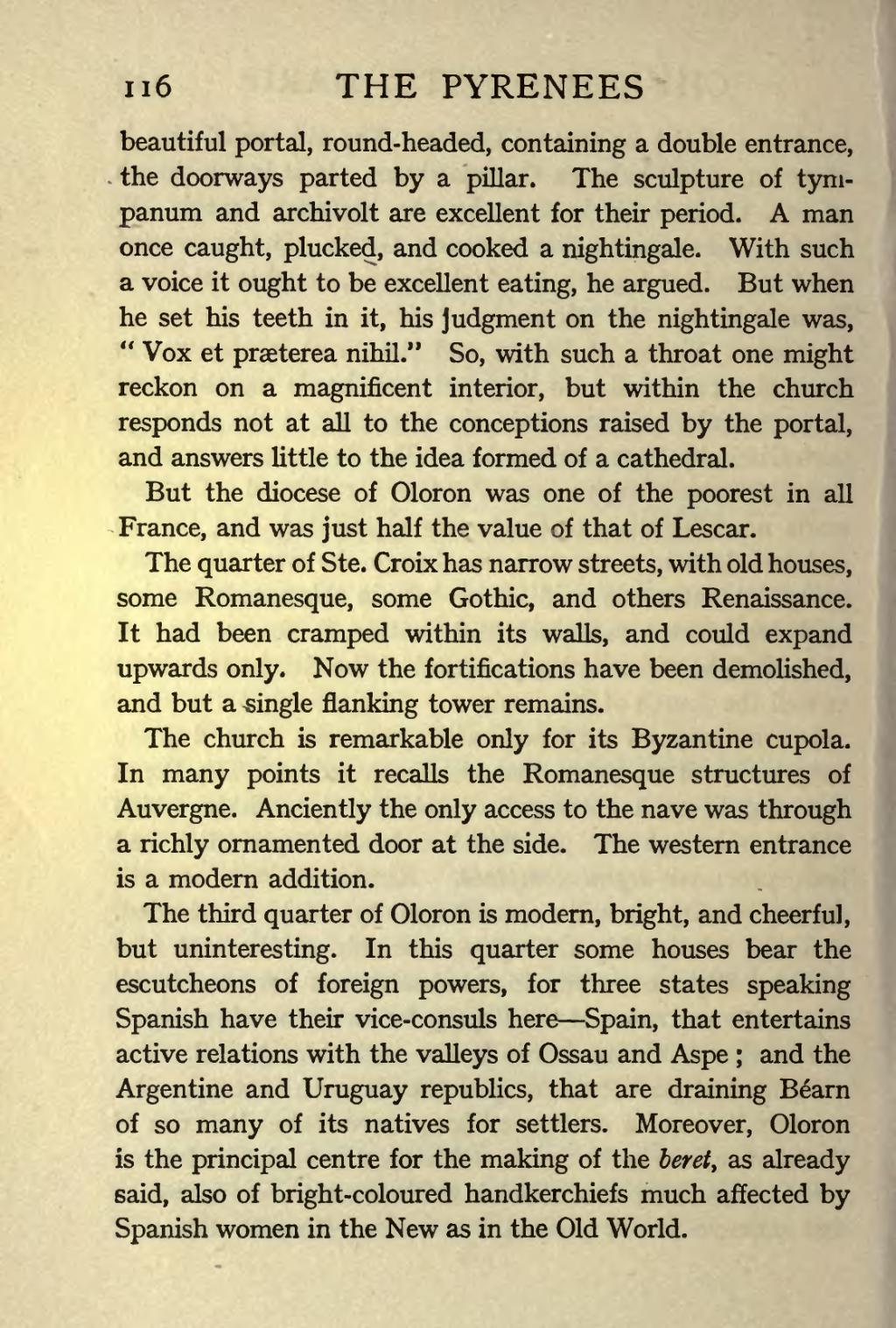beautiful portal, round-headed, containing a double entrance, the doorways parted by a pillar. The sculpture of tympanum and archivolt are excellent for their period. A man once caught, plucked, and cooked a nightingale. With such a voice it ought to be excellent eating, he argued. But when he set his teeth in it, his judgment on the nightingale was, "Vox et præterea nihil." So, with such a throat one might reckon on a magnificent interior, but within the church responds not at all to the conceptions raised by the portal, and answers little to the idea formed of a cathedral.
But the diocese of Oloron was one of the poorest in all France, and was just half the value of that of Lescar.
The quarter of Ste. Croix has narrow streets, with old houses, some Romanesque, some Gothic, and others Renaissance. It had been cramped within its walls, and could expand upwards only. Now the fortifications have been demolished, and but a single flanking tower remains.
The church is remarkable only for its Byzantine cupola. In many points it recalls the Romanesque structures of Auvergne. Anciently the only access to the nave was through a richly ornamented door at the side. The western entrance is a modern addition.
The third quarter of Oloron is modern, bright, and cheerful, but uninteresting. In this quarter some houses bear the escutcheons of foreign powers, for three states speaking Spanish have their vice-consuls here—Spain, that entertains active relations with the valleys of Ossau and Aspe; and the Argentine and Uruguay republics, that are draining Béarn of so many of its natives for settlers. Moreover, Oloron is the principal centre for the making of the beret as already said, also of bright-coloured handkerchiefs much affected by Spanish women in the New as in the Old World.
